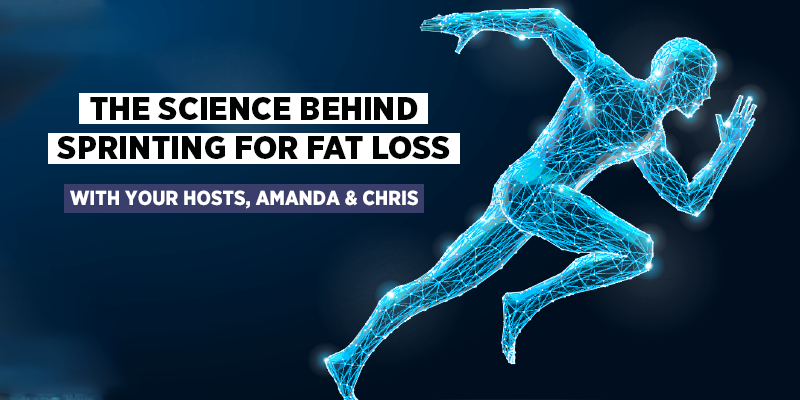
There are so many great ways to exercise, but sprinting is one of the best when it comes to getting the most bang-for-buck and optimizing the time you spend working out. Sprinting is an alternative that can help you maintain a solid level of fitness, even if you don’t have access to a gym. Plus, there are a ton of health benefits from it. In this episode, we discuss the many health benefits of sprinting, why it’s so efficient, specific details on how you can incorporate it in your routine, and more.
Episode 26: The Science Behind Sprinting for Fat Loss
Show Notes
There are so many great ways to exercise, but sprinting is one of the best when it comes to getting the most bang-for-buck and optimizing the time you spend working out. Sprinting is an alternative that can help you maintain a solid level of fitness, even if you don’t have access to a gym. Plus, there are a ton of health benefits from it. In this episode, we discuss the many health benefits of sprinting, why it’s so efficient, specific details on how you can incorporate it in your routine, and more.
In this episode you’ll learn:
- Why sprints are one of the most effective exercises you can do
- About the difference between LISS (Low Intensity Steady State) and HIIT (High Intensity Interval Training)
- How interval training works
- About how to find the best work to rest ratio and intensity levels for you
- How sprints compare to steady state cardio
- About EPOC (Excess Post Exercise Oxygen Consumption) or after-burn (the amount of energy you burn after a workout)
- How cortisol can affect appetite
- About the difference between anabolism and catabolism
- Why sprints are one of the most bang-for-your-buck exercises
- How many times a week to sprint if you’re just starting out
- About Amanda’s go-to pyramid run (details below)
- Why sprinting can lead to better body composition
- Why sprinting can have a much greater effect in reducing belly fat than more moderate forms of exercise like aerobic training which is like steady state cardio
- That there are 3 mechanisms behind the fat loss effects of sprint training – EPOC, reduced appetite, and increased fat burning
- Why starting with stationary bike sprints is another good option
- About the Wingate protocol
- About descending distance protocol
- About some explosive HIIT moves that you can do if you aren’t able to sprint outdoors
Studies:
https://www.ncbi.nlm.nih.gov/pmc/articles/PMC3763312/
https://www.ncbi.nlm.nih.gov/pmc/articles/PMC5465984/
https://www.ncbi.nlm.nih.gov/pubmed/22710610
https://www.ncbi.nlm.nih.gov/pubmed/22720138
https://www.ncbi.nlm.nih.gov/pubmed/27806634
Pyramid Workout:
3min run, 1 min rest, 2 min run, 1 min rest, 1 min sprint, 1 minute rest, (30 sec sprint, 30 sec rest X 4) (so ending with 4 30 second sprints)
Workout 1
Four all-out sprints in increasing distance order (100, 200, 300, 400 meters) or the reverse order. Rest intervals are 4 minutes following the 400, 3 minutes following the 300, and 2 minutes following the 200, and 1 minute after the 100.
Workout 2
Six to ten repeats of 35-meter all-out sprints with 10-seconds rest.
Workout 3
4-day-a week interval program:
Day 1 & 3 – ten 30-second all-out sprints with 90 seconds active rest;
Day 2 & 4 – do 6 intervals of 2 minutes at maximal speed followed by 90 seconds active rest;
Workout 4
Six repeats of 30 second all out Sprints (~200m) w/ 30-45 second rests
- Connect with with Amanda here: @MeowMeix | MeowMeix.com

Recent Comments